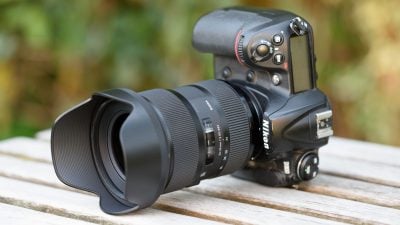Sigma 24-35mm f2 Art review
-
-
Written by Thomas
Quality
Longitudinal Chromatic Aberration and focus shift
With lenses offering an aperture of f2.8 or larger I test for longitudinal CA (loCA, a.k.a. “axial color” or “bokeh CA”). The Sigma shows a pretty weak magenta coloration in the foreground (left) and greenish hues in the background (right). It is practically gone by f4.
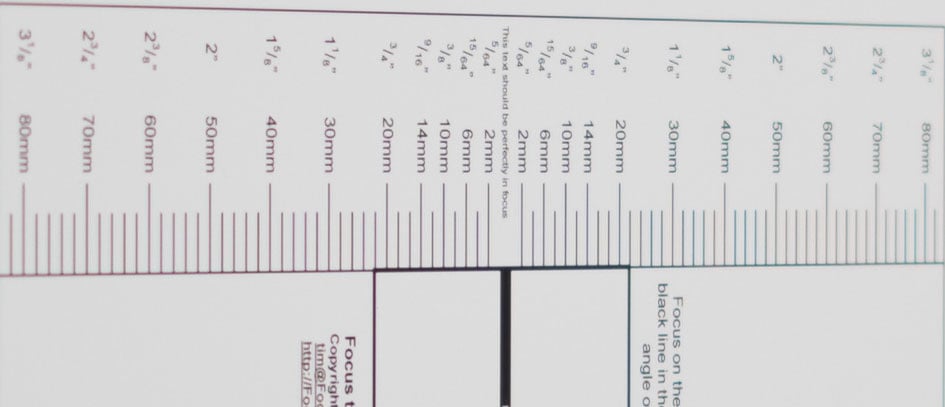
Above: Sigma 24-35/2.0 Art Longitudinal Chromatic Aberration (loCA). 100% crop, 35mm, f2.0; left = foreground, right = background
The lens exhibits quite some focus-shift to the background when stopping down to f2.8:
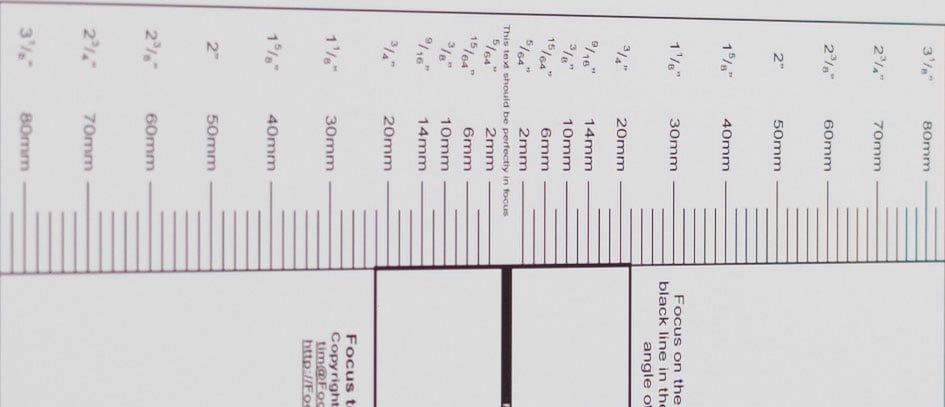
Above: Sigma 24-35/2.0 Art Longitudinal Chromatic Aberration (loCA). 100% crop, 35mm, f2.8; left = foreground, right = background
Sharpness and contrast
Let’s have a look at the theoretical performance of the Sigma 24-35/2.0 Art first compared to the performance of the Nikon’s 24/1.8G ED and 35/1.8G ED:
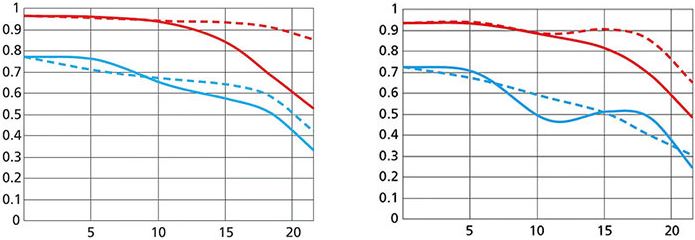
Above: Sigma 24-35/2.0 Art MTF; left at 24mm, f2.0; right at 35mm, f2.0
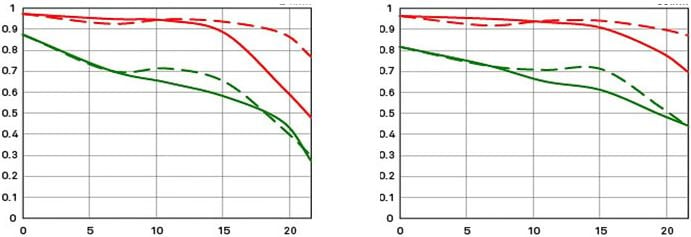
Above left: Nikon 24/1.8G MTF at f1.8; right: Nikon 35/1.8G MTF at f1.8
These charts show the lens-performance at the largest aperture. Higher values are better and the closer the dotted and the continuous lines of each color are together the less astigmatism (= resolution depends on the orientation of the test-pattern) the lens has. The x-axis displays the distance from the optical axis (=center of the sensor) in mm. I’ll show you the real-life performance at 4 mm (center), 13 mm (APS-C/DX-corner), and 20 mm (FF/FX-corner) on a D810.
From the charts, the new lens looks clearly better at the wide end than its predecessor. At 70mm the story is a bit different: In overall contrast both lenses look similar, but the old lens has an advantage between 4mm and 11mm off the optical axis, while the new zoom is better outside the APS-C/DX image-circle (15-21mm). But let’s see how this theoretical performance translates into real life results in the sharpness test based on Siemens-stars.
What follows are near-center results (first column) followed by APS-C/DX-corner results and FF/FX-corner results on a D810. The D810 results from the APS-C/DX-corner should be a very good approximation for performance on a 16MP APS-C/DX sensor (like the D7000), because the pixel-pitch of both sensors are the same. But differences in the AA-filter and micro-lens-design of a D810 and a D7000 might yield different end-results.
Processing was done in Lightroom 6.3 from RAW at Camera Standard settings. Noise-reduction is set to 0, sharpening to 35/0.5/36/10, with no extra tone, color, or saturation-adjustment. White-balance was adjusted to a neutral white and I did some exposure compensation to make the brightness match. CA-removal is ON.
The following are all 100% crops!
First is an overview of the performance wide-open (f2.0) at various focal lengths from 24mm to 35mm to get an impression how the lens behaves over its zoom-range:
Sigma 24-35/2.0 Art on Nikon D810; 100% crop from center, APS-C/DX-corner, FF/FX-corner

Above: 24mm, f2.0

Above: 28mm, f2.0

Above: 31mm, f2.0

Above: 35mm, f2.0
As you can see the zoom is very good wide open across the full frame sensor. Center performance stays at a very high level over the zoom-range. The APS-C/DX-corner is quite contrasty as well but is a bit softer than the center. There is also some gradual deterioration when you zoom towards the long end. The FF/FX-corner is a bit hazy but offers plenty resolution none-the-less up to 31mm but drops a notch in quality at 35mm.
Following are the results in detail at different apertures, or you can jump directly to the comparison with other lenses here.
Performance at 24mm:
Sigma 24-35/2.0 Art on Nikon D810; 100% crop from center, APS-C/DX-corner, FF/FX-corner

Above: 24mm, f2.0

Above: 24mm, f2.8

Above: 24mm, f4.0

Above: 24mm, f5.6

Above: 24mm, f8.0

Above: 24mm, f11
Performance at 28mm:
Sigma 24-35/2.0 Art on Nikon D810; 100% crop from center, APS-C/DX-corner, FF/FX-corner

Above: 28mm, f2.0

Above: 28mm, f2.8

Above: 28mm, f4.0

Above: 28mm, f5.6

Above: 28mm, f8.0

Above: 28mm, f11
Performance at 31mm:
Sigma 24-35/2.0 Art on Nikon D810; 100% crop from center, APS-C/DX-corner, FF/FX-corner

Above: 31mm, f2.0

Above: 31mm, f2.8

Above: 31mm, f4.0

Above: 31mm, f5.6

Above: 31mm, f8.0

Above: 31mm, f11
Performance at 35mm:
Sigma 24-35/2.0 Art on Nikon D810; 100% crop from center, APS-C/DX-corner, FF/FX-corner

Above: 35mm, f2.0

Above: 35mm, f2.8

Above: 35mm, f4.0

Above: 35mm, f5.6

Above: 35mm, f8.0

Above: 35mm, f11
35mm is the weakest focal length of this lens and you need to stop down to f5.6 to get impeccable performance at the APS-C/DX-corner and even f8 for a clean and sharp FX-corner. At the shorter focal lengths you only need to go to f2.8 or f4.0 to achieve the same clarity. The effect of diffraction sets in from f11 onwards at all focal lengths. Distortions are lowest somewhere between 24mm and 28mm focal length, the latter already showing a clear pin-cushion distortion which becomes increasingly prominent zooming towards 35mm.
It’s not easy to find the appropriate lenses for a comparison to the Sigma 24-35/2.0 Art as it offers a larger aperture than other zooms combined with a limited zoom-range. But Sigma obviously aims at f1.8 primes in that focal range too. So following is a comparison with large-aperture primes as well as the stabilized f2.8 zooms at various focal lengths to give a multi-faceted picture of how the Sigma compares.
Comparison at 24mm:
Following is the performance of the Sigma 24-35/2.0 Art directly compared to the Sigma 24/1.4 Art and the Nikon 24/1.8G at 24mm f2.0:

Above: Sigma 24-35/2.0 Art at 24mm, f2.0

Above: Sigma 24/1.4 Art at 24mm, f2.0

Above: Nikon 24/1.8G ED at 24mm, f2.0
The Sigma zoom easily competes against both fixed focals. It’s not as bitingly sharp in the center as the Sigma 24/1.4 Art is at f2.0 but still very good. And it proves to have the better APS-C/DX corner than both competitors plus it is almost as good as the Nikon in the FF/FX corner.
Following is the performance of the Sigma 24-35/2.0 Art directly compared to the Nikon 24-70/2.8E VR and the Tamron SP 15-30/2.8 VC at 24mm f2.8:

Above: Sigma 24-35/2.0 Art at 24mm, f2.8

Above: Nikon 24-70/2.8E VR at 24mm, f2.8

Above: Tamron SP 15-30/2.8 VC at 24mm, f2.8
Compared to the Nikon and Tamron zooms at f2.8 the Sigma fares equally well: It is the best in the center, comparable at the APS-C/DX corner and only slightly behind the Tamron in the FF/FX corner. Regarding distortions the Sigma is better than both zooms from Nikon and Tamron.
Comparison at 28mm:
Following is the performance of the Sigma 24-35/2.0 Art directly compared to the Nikon 28/1.8G at 28mm f2.0:

Above: Sigma 24-35/2.0 Art on Nikon D810 at 28mm, f2.0

Above: Nikon 28/1.8G ED on Nikon D800 at 28mm, f2.0
The Sigma zoom comes out as the winner against the Nikon regarding resolution and overall contrast especially regarding the corners. Although distortions on the fixed focal are slightly less.
Following is the performance of the Sigma 24-35/2.0 Art directly compared to the Nikon 24-70/2.8E VR at 28mm f2.8 and the Tamron SP 15-30/2.8 VC at 30mm f2.8:

Above: Sigma 24-35/2.0 Art at 28mm, f2.8

Above: Nikon 24-70/2.8E VR at 28mm, f2.8

Above: Tamron SP 15-30/2.8 VC at 30mm, f2.8
Situation is similar to 24mm only that the Tamron (compared here at 30mm) is now at its weak end and cannot beat the Sigma zoom which is the best in this comparison.
Comparison at 35mm:
Following is the performance of the Sigma 24-35/2.0 Art directly compared to the Sigma 35/1.4 Art, the Nikon 35/1.8G, and the Tamron 35/1.8 VC at 35mm f2.0:

Above: Sigma 24-35/2.0 Art on Nikon D810 at 35mm, f2.0

Above: Sigma 35/1.4 Art on Nikon D800 at 35mm, f2.0

Above: Nikon 35/1.8G ED on Nikon D800 at 35mm, f2.0

Above: Tamron SP 35/1.8 VC on Nikon D810 at 35mm, f2.0
Even at its weakest end of the focal length the Sigma zoom fares quite well against the fixed focals. It is as sharp in the center as the Sigma 35/1.4 Art or the Tamron at f2.0 which makes it slightly sharper than Nikon’s fixed focal. At the APS-C/DX corner it is better than the Sigma 35/1.4 Art but is bested by the Nikon and the Tamron. Only in the FF/FX corner the Sigma zoom takes last place although it might be debatable whether you like the rendering of the Nikon in that corner better than from the Sigma zoom. All three fixed focals show clearly less distortions than the Sigma zoom.
Following is the performance of the Sigma 24-35/2.0 Art directly compared to the Nikon 24-70/2.8E VR and the Tamron SP 24-70/2.8 VC at 35mm f2.8:

Above: Sigma 24-35/2.0 Art on Nikon D810 at 35mm, f2.8

Above: Nikon 24-70/2.8E VR on Nikon D810 at 35mm, f2.8

Above: Tamron SP 24-70/2.8 VC on Nikon D800 at 35mm, f2.8
Compared to the Nikon and Tamron zooms at f2.8 the Sigma performs comparably to the newest Nikon zoom (which costs 2.5x as much). The Tamron excels in the APS-C/DX corner and it has the least distortions at 35mm but its FF/FX corner is outright ugly .
These comparisons reveal an astonishing result: At close range the Sigma zoom can indeed perform on a similar level as the respective fixed focals and even surpasses them at times regarding resolution. It’s also right up there with the best zooms.
Performance at long distances
The Siemens-star test-targets are shot at a distance of 40x focal length (i.e. at 2m for 50mm focal length). But performance of lenses also depends on the shooting distance. Therefore I present another series of test-shots of a landscape dubbed the “Unremarkables” where you can measure distances in km, not meter. Processing was done in Lightroom 6.3 from RAW at Adobe Standard settings. Noise-reduction is set to 0, sharpening to 35/0.5/36/10, with no extra tone, or saturation-adjustment. There’s no tinkering with vignette-control so you see it here as it is produced by the lens. Focus was acquired at the largest aperture manually and not changed for other apertures.
You can click on each image to access the large original. Please respect our copyright and only use those images for personal use.
First is an overview of the performance wide-open (f2.0) at various focal lengths from 24mm to 35mm to get an impression how the lens behaves over its zoom-range. The weather was sunny but there was a haze that reduced the overall contrast quite a bit especially in the center crops:
Sigma 24-35/2.0 Art on Nikon D810; 100% crop from center, APS-C/DX-corner, FF/FX-corner

Above: 24mm, f2.0

Above: 28mm, f2.0

Above: 31mm, f2.0

Above: 35mm, f2.0
The zoom repeats its great performance from the Siemens star test-shots. Only the APS-C/DX-corner performance wide open seems a little weaker in these long-range shots especially at 28mm. The FF/FX-corner also performs convincingly across the zoom-range with little loss of resolution at 35mm.
Unfortunately I was not able to take shots with other comparable lenses on the same day: And with the changing atmospheric conditions it would not be fair to pitch shots of the Sigma zoom against other lenses shot under vastly different conditions. But my impression is that the Sigma compares similarly in the long shots as in the test-shots of the Siemens-stars.
Following are the results in detail at different apertures, or you can jump directly to the next chapter here.
The main image shows the complete scene at f2.0 to give you an impression of the angle of view and to judge vignetting. You can access the respective shots up to f16 via the links beneath the main image. All shots were made at ISO 64. Following the main image are 100% crops from the center, the APS-C/DX-corner and the FF/FX-corner down to f8.
Results at 24mm focal length:
Sigma 24-35/2.0 Art at 24mm on Nikon D810
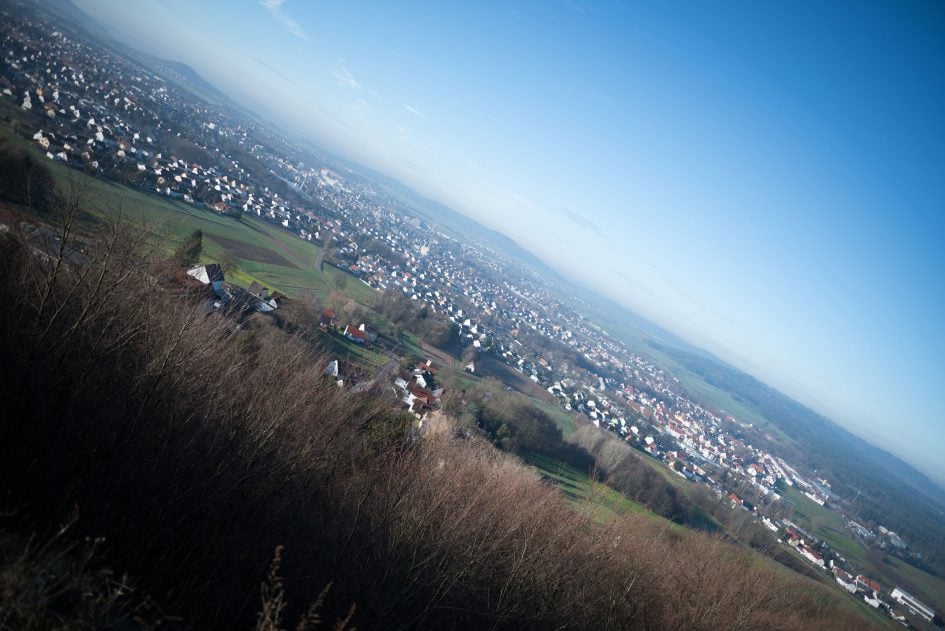
Above: at 24mm, f2.0; also available at f2.8, f4.0, f5.6, f8.0, f11, f16

Above: at 24mm, f2.0; 100% crop from center, APS-C/DX-corner, FF/FX-corner

Above: at 24mm, f2.8; 100% crop from center, APS-C/DX-corner, FF/FX-corner

Above: at 24mm, f4.0; 100% crop from center, APS-C/DX-corner, FF/FX-corner

Above: at 24mm, f5.6; 100% crop from center, APS-C/DX-corner, FF/FX-corner

Above: at 24mm, f8.0; 100% crop from center, APS-C/DX-corner, FF/FX-corner
The center crop at f2.0 looks somewhat hazy in comparison to the crops at smaller apertures. This is because it’s almost 1/2 stop brighter than the rest. If you reduce exposure in post-processing by -0.5 EV the contrast of the f2.0 crop is very similar to the f2.8 crop – but naturally less sharp. Exposure was 1/1600 at f2.0 and 1/800 at f2.8 so it’s not quite clear what caused the over-exposure of the center at f2.0.
Results at 28mm:
Sigma 24-35/2.0 Art at 28mm on Nikon D810
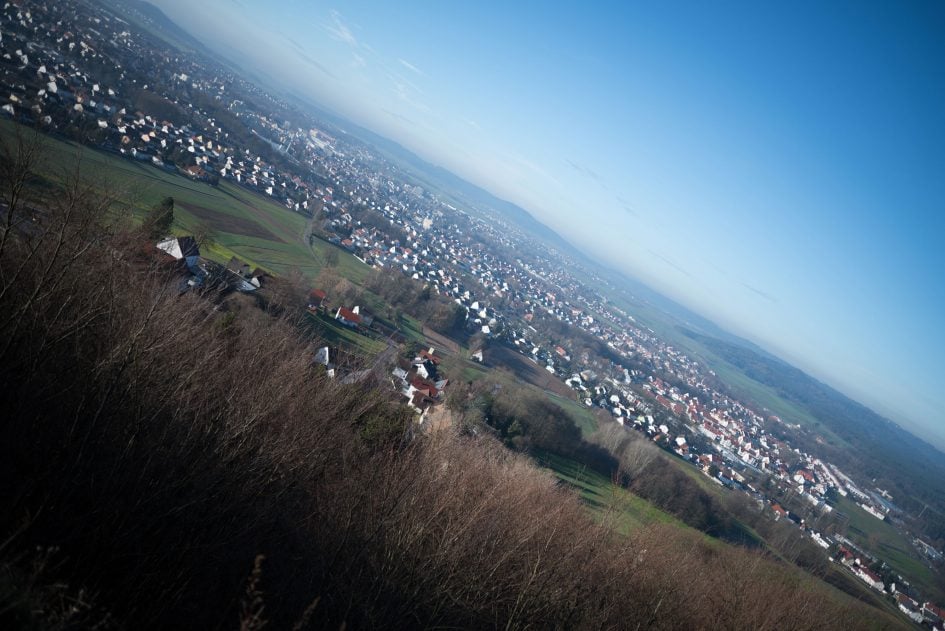
Above: at 28mm, f2.0; also available at f2.8, f4.0, f5.6, f8.0, f11, f16

Above: at 28mm, f2.0; 100% crop from center, APS-C/DX-corner, FF/FX-corner

Above: at 28mm, f2.8; 100% crop from center, APS-C/DX-corner, FF/FX-corner

Above: at 28mm, f4.0; 100% crop from center, APS-C/DX-corner, FF/FX-corner

Above: at 28mm, f5.6; 100% crop from center, APS-C/DX-corner, FF/FX-corner

Above: at 28mm, f8.0; 100% crop from center, APS-C/DX-corner, FF/FX-corner
Results at 31mm are also available but I won’t show them here as the differences are minimal: 31/2.0, 31/2.8, 31/4.0, 31/5.6, 31/8.0, 31/11, 31/16.
Results at 35mm:
Sigma 24-35/2.0 Art at 35mm on Nikon D810
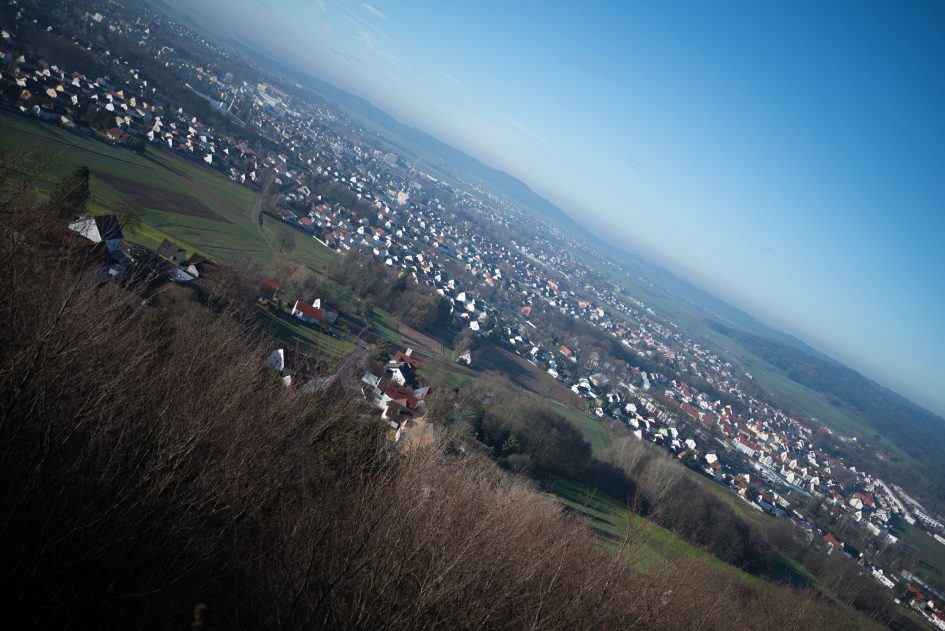
Above: at 35mm, f2.0; also available at f2.8, f4.0, f5.6, f8.0, f11, f16

Above: at 35mm, f2.0; 100% crop from center, APS-C/DX-corner, FF/FX-corner

Above: at 35mm, f2.8; 100% crop from center, APS-C/DX-corner, FF/FX-corner

Above: at 35mm, f4.0; 100% crop from center, APS-C/DX-corner, FF/FX-corner

Above: at 35mm, f5.6; 100% crop from center, APS-C/DX-corner, FF/FX-corner

Above: at 35mm, f8.0; 100% crop from center, APS-C/DX-corner, FF/FX-corner
The detailed analysis shows that you only need to stop down to f4 to get very good results across the full-frame sensor and also very little vignetting.
To make it easier to see light fall-off in the corners of a full-frame sensor I’ve arranged a series of three shots each at 24mm (1st row) and at 35mm (2nd row) at f2.0, f2.8 and f4.0 (from left to right):
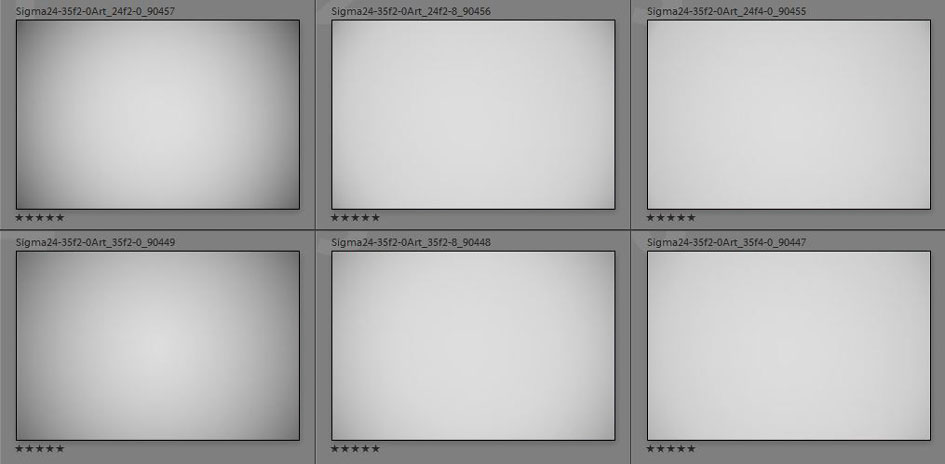
Above: Vignetting of Sigma 24-35/2.0 Art at 24mm (1st row) and 35mm (2nd row); from left to right: f2.0, f2.8, f4.0
At f4.0 vignetting is no longer relevant.
Rendering of point-light sources at night-shots
Night-shots pose a different challenge for lenses as the contrast is even higher than under bright sun and point-light sources can reveal some weaknesses such as coma, haloing and color-aberrations that do not show up as prominently in other test-shots. The 100% crops below the main image show the effect of coma in the FX corner of this lens at various apertures and focal lengths:
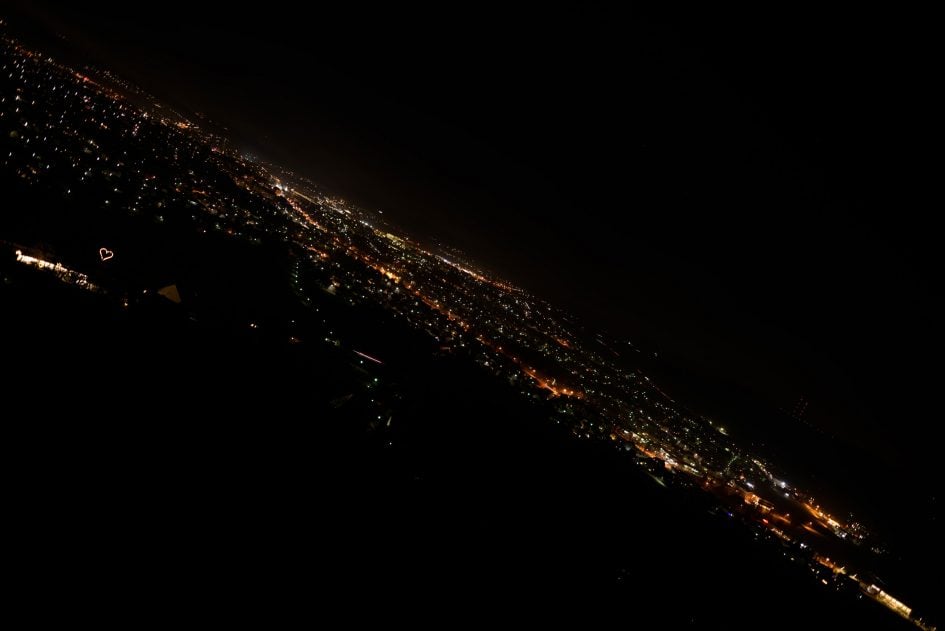
Above: Sigma 24-35/2.0 Art at 24mm, f2.0; also available at f2.8, f4.0, f5.6

Above: Sigma 24-35/2.0 Art at 24mm; FF/FX corner at f2.0, f2.8, f4.0

Above: Sigma 24-35/2.0 Art at 28mm; FF/FX corner at f2.0, f2.8, f4.0

Above: Sigma 24-35/2.0 Art at 35mm; FF/FX corner at f2.0, f2.8, f4.0
At 24mm coma is comparable to other fixed focals like e.g. the Nikon 24/1.8G. At 35mm coma is relatively moderate, much less than e.g. with the Nikon 35/1.8G. The effect is mostly gone at f4.
Rendering of out-of-focus point-light sources
This test is for the rendering of point-light sources in an out-of-focus background. The circle of confusion that is produced by this test is pretty indicative of Bokeh performance (in the background) and light fall-off. Ideally the out-of-focus image of the point-light is evenly lit and perfectly circular, with no “onion-rings”, and without coloration. Large aperture lenses normally produce an effect known as “cat’s eye” the further away from the optical axis the point-light is projected. This is due to optical vignetting in the lens barrel when light enters the lens from an angle.
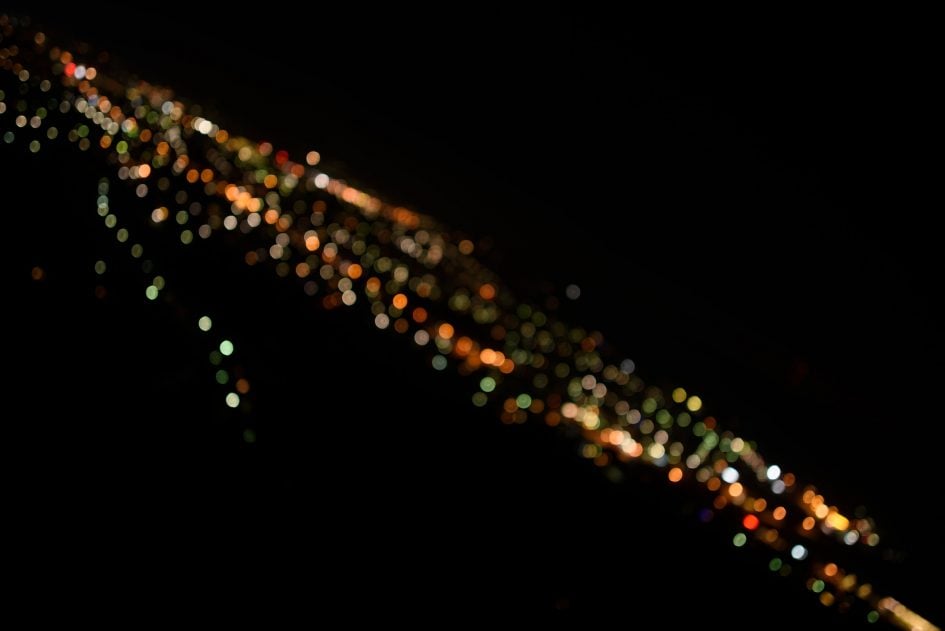
Above: Sigma 24-35/2.0 Art at 35mm, f2.0; also available at f2.8, f4.0, f5.6

Above: Sigma 24-35/2.0 Art at 35mm, f2.0. 50% crop from center, APS-C/DX-corner, FF/FX-corner
The Sigma 24-35/2.0 Art at f2.0 produces a slightly smaller circle of confusion than other 35mm primes at f1.8. But its “Bokeh balls” exhibit almost no onion rings despite its three aspherical elements and outlining is also well controlled with only a little green from loCA. The cat’s-eye effect towards the borders/corners of the sensor is relatively moderate and there is no clipping from the mirror-box.
Now let’s see how this analysis of out-of-focus point-light sources translates into Bokeh-performance shooting a book-shelf.
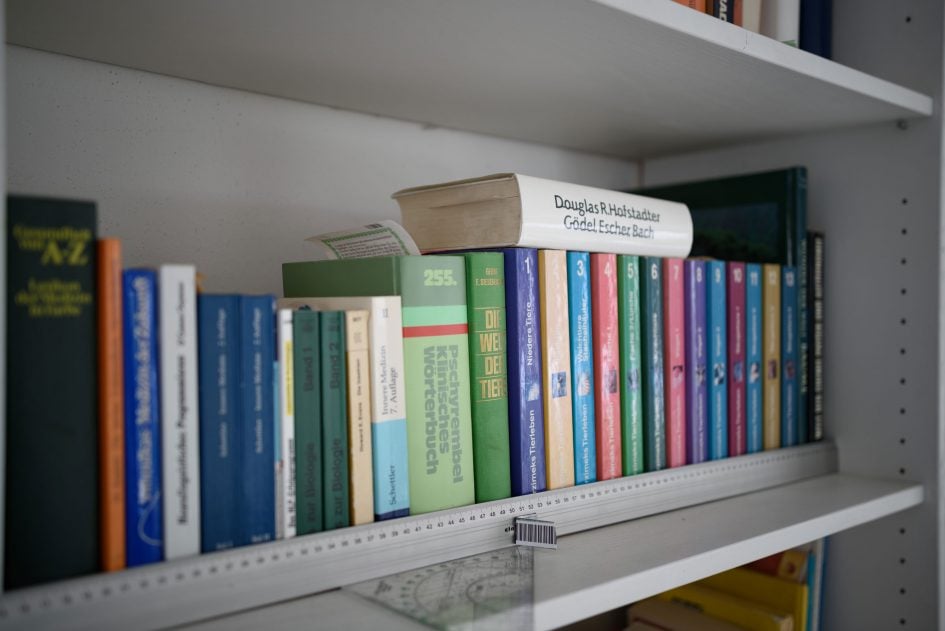
Above: Sigma 24-35/2.0 Art at 35mm, f2.0; also available at f2.8, f4.0, f5.6

Above: Sigma 24-35/2.0 Art at 35mm, f2.0. 50% crop from foreground, middle-ground, background
The (less important) foreground is smooth enough. The middle ground shows some nice defocus effect with very moderate coloration from loCA. And the background is pretty smooth with only a little outlining.
Flare/ghosting
Catching a strong light-source shining directly into the lens is a real risk with wide-angle lenses – even with the lens-hood attached. That could produce strange colorful ghosts-images or reduce contrast considerably through flare and glare. The appearance of flare and ghosting depends on factors like the aperture and the angle of the light hitting the lens. So to judge the proclivity of the Nikon for these artifacts I went through a series of almost 80 well calculated shots against a strong light source to provoke glare and ghosting.
The results are pretty good for such a complex design: The lens produced only relative weak artifacts when the light was outside the image-frame (but still shining directly into the lens). The strongest effects could be seen when the light-source was near the center:
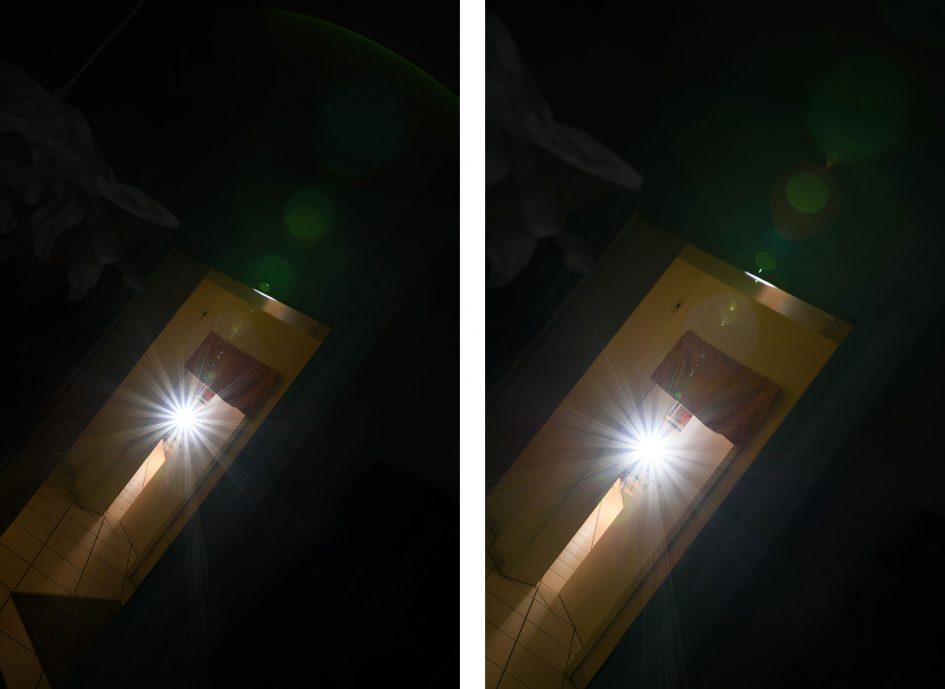
Above: Flare and ghosting. Strong point-light source hitting the Sigma 24-35/2.0 Art at 24mm, f8.0 (left), 35mm, f8.0 (right)




